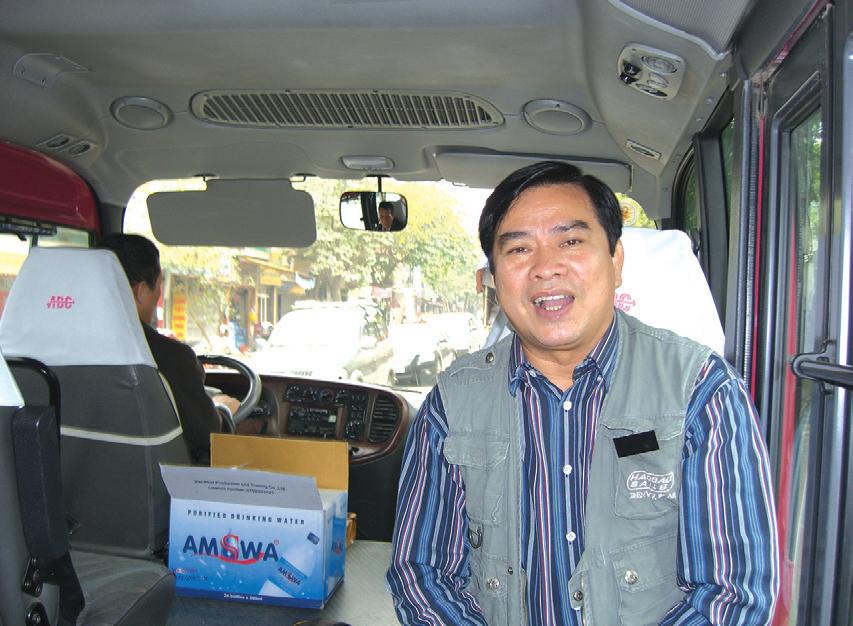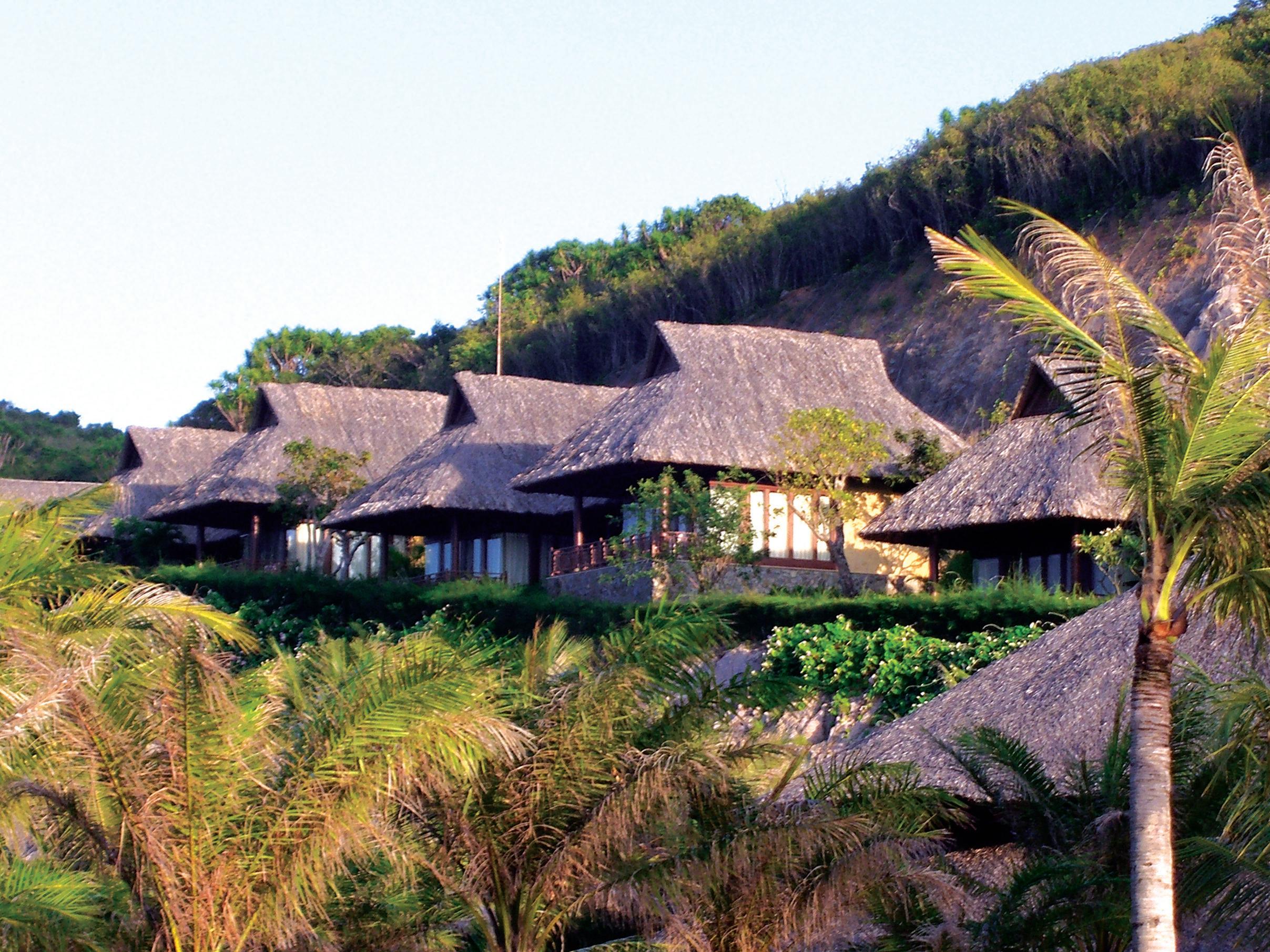
4 minute read
Vietnam Vietnam the tantalising taste of Asia the tantalising taste of Asia
from 2010-11 Sydney (2)
by Indian Link
inhabit this 1,600-kilometre-long ribbon of land bordering the South China Sea.
BY BRUCE HEILBUTH
Tabatha Muldoon experienced the eye-widening honesty of the Vietnamese on her first visit to the country some years ago. After a long flight from Australia, she met the person assigned to greet her and said, “Hello I’m Tabatha.”
“I know,” said her host with a smile. “I knew it was you because of the colour of your hair and because you’re a little bit fat.”
Tabatha, who’s not fat, has never forgotten that welcome but points out that, obviously, not all local folks speak to visitors quite so frankly. That’s especially true at the Hanoi Opera Hilton Hotel, where she’s now Director of Sales and Marketing and where the staff are unfailingly polite and obliging.
Still, in Vietnam what you see is what you get, as I discover on my first visit there this year. Over nine days I experience first-hand the hospitality and openness of the people who
I find, too, that Vietnam is no Third World backwater. From the chrysalis of occupation and war a butterfly has emerged – a proud Asian nation of 86 million whose value for money, splendid food and warmth towards visitors create a compelling recipe for a holiday.
And Vietnam, ranked among the countries expected to see the strongest tourism growth in the next decade, is keen to get more and more Indian visitors.
“We want to pitch ourselves hard in India . . . it is obviously a huge tourist market for us,” says a spokesperson for the Vietnam National Administration of Tourism (VNAT).
One major reason for traditionally modest arrivals from India, officials say, has been an absence of direct flights between the two countries. With better value fares now available, tourism authorities expect more Indian tourists to be among the four million-plus arrivals each year.
It’s a cool, overcast morning in the capital Hanoi as I emerge from the cavernous marble lobby of the Hanoi Opera Hilton Hotel. The five-star property is so named because it’s adjacent to the ornate opera house, built by the French, and so that visitors can distinguish it from the original, more infamous “Hanoi Hilton” – the Hoa Lo jail – a few blocks away.
In Hoa Lo prison, now a museum, the French colonial government incarcerated political prisoners in appalling conditions. It was also home to US presidential candidate John McCain for five-and-a-half years during the Vietnam War after his Skyhawk was shot down.
Later, taking some time away from my tour group, I approach a parked cyclo rider and ask him if he can take me shopping. “Of course,” he says with a gap-toothed grin. “Anywhere you like.”
I negotiate a fee in Vietnamese dong that’s the equivalent to $7 (“too much,” the concierge tells me later) and we set off, threading traffic in which squadrons of motorcycles, of which there are two million in the city, dodge and weave like angry hornets.
My obliging driver stops at a shopping centre so I can buy a shirt ($5), a pharmacy for aspirin (75 cents for a box of 100) and an art shop for limited-edition prints of Ho Chi Minh posters ($8 each).
The paradox of communist Vietnam’s budding commercialism is evident everywhere in Hanoi, which celebrates 1,000 years of existence this year. Western brand names and malls are juxtaposed here and there with garish party posters. One, a giant portrait of Lenin hugging a child, is set close to a KFC outlet.
Tour guide Le van Cuong, 57, explains it like this: “In Hanoi we have the Red River and the Black River. The red is for communism and the black is for capitalism. We used to be all red but now we’re grey. And we’re getting wealthier; we can’t see the bottom of the rice bin any more.”

Hanoi’s food is cheap and uniformly wonderful, from the Brother Café, an ancient temple converted to a bountiful restaurant, to the Aussie-run Kangaroo Café where, incongruously, I enjoy a terrific cheeseburger and chips.

For an insight into how genuine Vietnamese fare is prepared, we visit the Hoa Sua school for a hands-on cooking lesson from renowned local chef Nguyen Phuong Hai. “One of the secrets of Vietnamese food is sugar,” he cries as we file into a gleaming kitchen.
Phuong shows us how to make green papaya with dried beef salad, grilled fish Hanoi style and black sticky rice syrup. Afterwards, as we devour our own creations, an explosion of flavours tantalises our tongues. Delicious!
A short flight from Hanoi is Dalat (population: 200,000) set in jungly hills, where we spend two nights at the gracious Sofitel Dalat Palace, a colonial architectural masterpiece in the city the French developed and dubbed Le Petit Paris. A prime feature of Dalat is its busy food market, with vegetables and colourful fruit piled like miniature mountains.
Then it’s on to the resort town of Nha Trang and, a fifteen-minute boat ride away, Hon Tam island. The luxury “eco green” Hon Tam resort is an eden of pristine beaches, turquoise water and an open-sided restaurant from which diners gaze through palms over a marine park.


Here I wash my grilled fish down with an Australian sauvignon and, not for the first time this trip, toast a country whose amalgam of tastes and sights will endure in the mind long after the visit is over.
From a pastiche of memories the words of Le van Cuong stand out. At the age of 15 he spent three months walking from the north to the south of the country to help fight Australians and Americans. Like every Vietnamese I meet he bears no grudges. “That’s all in the past!” he says with a booming laugh. “We’re all good friends now.”
Travel notebook
Vietnam










